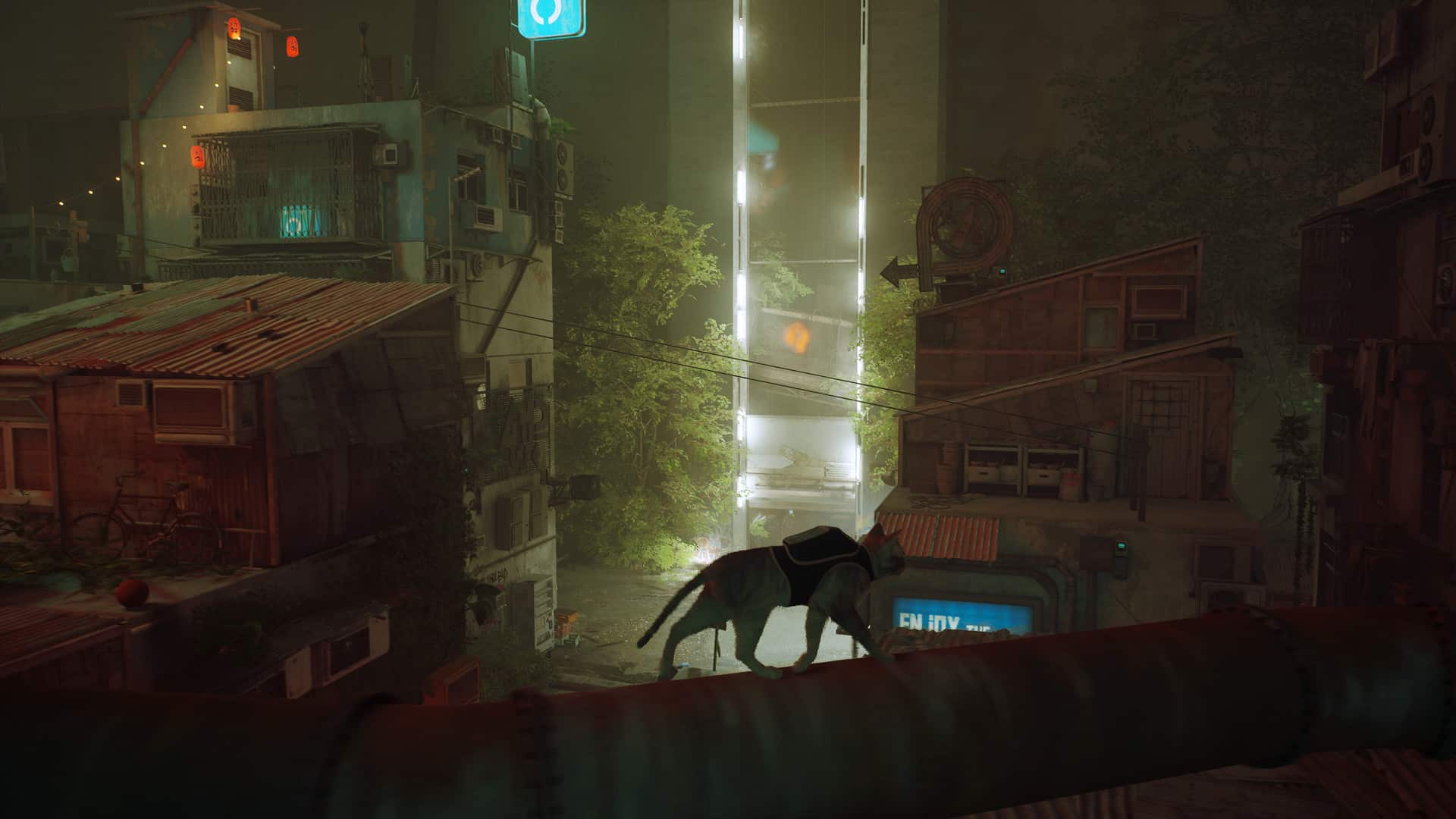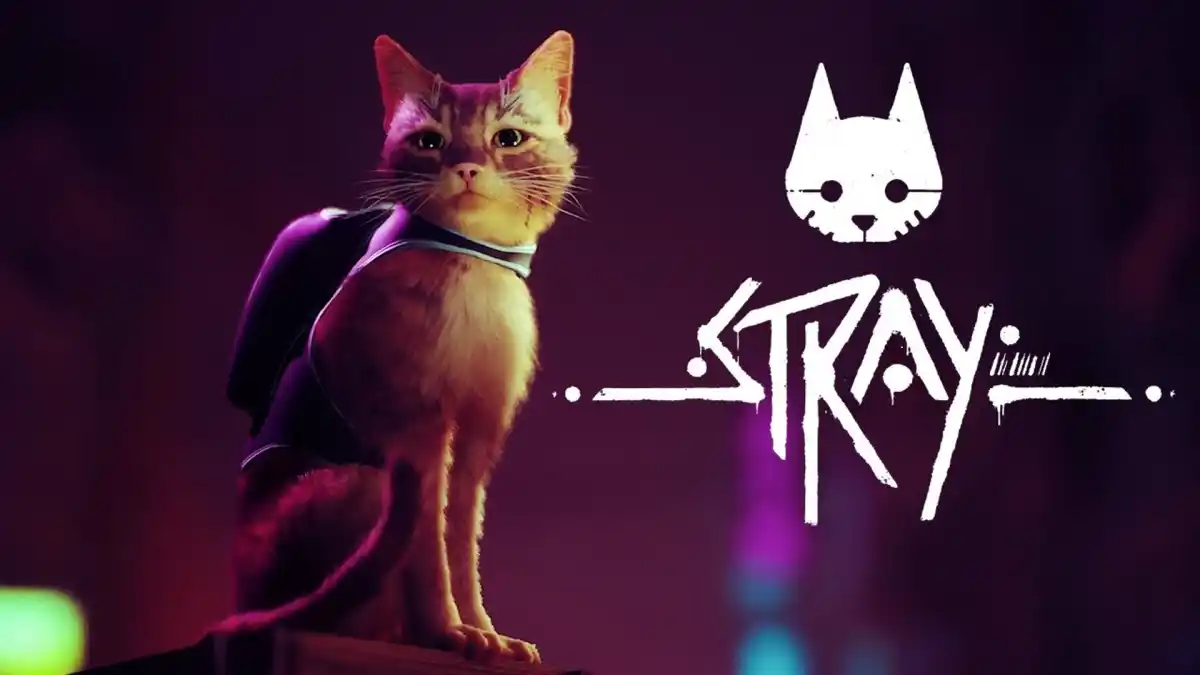When I saw the first trailer for Stray, I was skeptical. Being a cat in a neon-soaked robot future looked fun, but you can make anything look fun in a trailer. Maybe playing as a cat would be merely an aesthetic difference from other games, and it’d quickly feel like everything else.
In Stray, you can’t understand or speak to the robots. You pick things up with your mouth. You can jump pretty high, but turning doorknobs is impossible. These are the obvious consequences of the player embodying a cat, but they don’t change the game all that much. It’s still an action adventure game with puzzles and exploration. Strictly speaking, a game featuring a small robot could have all these gameplay features and restrictions.
However, it’s the pointless things that add unexpected cat-ness to the game.
Many objects scattered around the world are interactable, and a number of them have no purpose. You can drink water from puddles, but you don’t need to drink. You can knock objects off tables, but there’s no penalty for not bothering.
However, these mechanics provide an opportunity for the player to express themselves. You’re not forced to do these things, but you’re allowed to. This lack of external rewards or punishments allows you to decide what kind of cat you are.
Are you the kind of cat who gets right up in someone’s face, then scratches their couch while you meow at them? Or do you have an endless love for piano keys and breaking vases?

The genius of this is that these interactions, although they give no reward, are fun because they feel transgressive. The game wants you to go find the next objective, so of course you want to do the thing the game doesn’t ask you to do: have silly, pointless fun. But the designers are also the ones who created the places you can nap, drink water, or trip passers-by.
This is an intentional choice to allow expressive play between more focused sections of Stray gameplay. If you’re feeling fatigued with your current quest, there are a bunch of silly little activities to amuse yourself with, allowing the pacing to be influenced by the player.
It also helps you get into the mindset of a cat. You may not be able to tell what the cat is thinking, but you’re given the opportunity to push something off a shelf just to see what happens. Slowly, you are transformed into an agent of mayhem. You’re not actively malicious… probably… You just don’t care much about how the robots around you think you should act, and you are more interested in doing things that are fun, like walking all over their keyboards.
This is all supported by the fantastic animation. Whether you’re interacting with an object or just walking around, the cat’s animations are cute and detailed enough to make it even more fun to just exist as a cat. As you walk under cars, the cat kneels down. As you jump, they squash and stretch. As you push things off shelves, the cat gently shoves them off like they’re just curious to see what’ll happen. All of this just makes it feel right. Add to this the exaggerated way the robots react, and you have a recipe for being a mischievous cat.
None of this affects the overall story of the game. Whether you’re the biggest annoyance or the sweetest angel, you still have to perform the actions the game requires to complete it. It’s hard to interpret why the cat does things like go into danger or help people when they ask, because it can’t speak.
But through letting you take part in cat-like shenanigans, Stray helps you maintain a connection to the cat, even if you can’t fully understand what it’s thinking. Because once you understand the joy of pushing things off shelves, you feel a bit more like a kitty than a simple player avatar.






Published: Jul 21, 2022 11:00 am